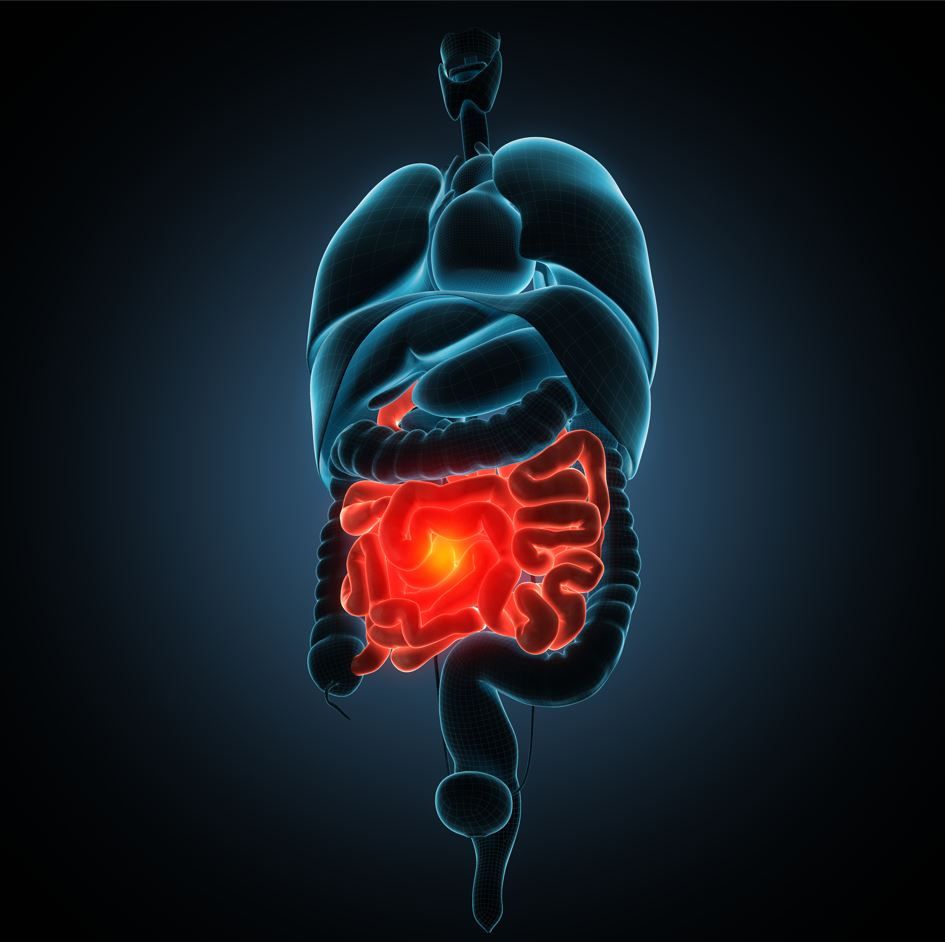Upadacitinib Found Effective in Achieving Remission in Crohn Disease, Including Biologic-Experienced Patients
In a real-world study of patients with Crohn disease, upadacitinib achieved 52.1% clinical remission at 12 weeks and 42.7% endoscopic remission at 6 months, with no new safety concerns reported.
©unlimit3d/AdobeStock

Upadacitinib demonstrated real-world effectiveness for inducing and maintaining clinical and endoscopic remission in patients with moderate-to-severe Crohn disease (CD), including those with prior advanced therapy exposure, according to results of a multicenter retrospective study published in Clinical Gastroenterology and Hepatology.1
The analysis, conducted by the REBOOT-IBD consortium, included 334 adults across 9 US tertiary IBD centers who received upadacitinib 45 mg daily for active luminal CD. Investigators sought to evaluate the effectiveness and safety of upadacitinib over 6 months and identify predictors of treatment response.1
“Given the heterogeneity found among patients with CD, the fact that [upadacitinib] is currently not approved for first-line use, and prior off-label usage of [tofacitinib] in many patients with CD, we wanted to understand whether prior biologic or [tofacitinib] exposure affected outcomes,” investigators wrote.1 “Our study indicated that patients with previous [tofacitinib] exposure had similar outcomes with [upadacitinib] compared with those without prior [tofacitinib] exposure, demonstrating its potential as a rescue therapy in patients with refractory CD.”
The age- and sex-standardized incidence of IBD in the US is 10.9 per 100 000 person-years, peaking in the third decade of life. The standardized prevalence is 721 per 100 000, translating to about 2.39 million Americans with IBD. The CD subtype is estimated to impact 1.01 million Americans (205 cases per 100 000 people).2
Small molecule therapies like Janus kinase (JAK) inhibitors, particularly upadacitinib, offer promising oral alternatives with rapid onset and no risk of immunogenicity.1 However, real-world evidence for upadacitinib in CD is limited, especially regarding its effectiveness, safety, and optimal use. This study aimed to evaluate upadacitinib's real-world performance and identify predictors of treatment response in patients with active luminal CD across 9 US tertiary IBD centers.1
Patients included in the study had histologically confirmed CD, were 18 years or older, and were prescribed upadacitinib for active gastrointestinal/luminal disease. Data were collected retrospectively using a standardized data collection form on REDCap, with prespecified definitions and criteria. The primary goals were to evaluate clinical remission at 12 weeks and endoscopic remission at 6 months. Secondary outcomes included longer-term clinical response, steroid cessation, and radiographic improvement. Only patients on the 45-mg dose were included in effectiveness analyses, while safety outcomes were tracked for all patients. Adverse events (AEs), including infections, venous thromboembolism, cardiac events, and hospitalizations, were recorded.1
The study included 334 patients with CD (median age, 34 years; disease duration, 12 years; 44.6% women). Upadacitinib was started in 93.4% of participants due to active disease, with 80% showing confirmed inflammation by colonoscopy. Most (79%) underwent a 12-week induction, 96% of whom followed that with a 30 mg-maintenance dose. Nearly all participants had prior exposure to advanced therapies (ATs), and almost half had a history of bowel surgery.1
At 12 weeks, 52.1% of patients achieved clinical remission, with 90.4% of those corticosteroid-free. At 6 months, clinical remission was maintained in 55.9%, and 94% remained off steroids. Endoscopic remission at 6 months was observed in 42.7% of patients.1
Clinical response, defined as a ≥50% improvement in symptoms, was reported in 61.7% of individuals at 12 weeks and in 66.5% of participants at 6 months. Radiographic improvement was documented in 73.3% of those with imaging follow-up, and histologic remission was observed in 23.5%. Endohistologic remission occurred in 7.8%, according to the results.1
Nearly all patients (82%) had received ≥1 prior advanced therapy. Among AT–naive individuals, clinical remission rates were notably higher at 6 months (97.7%) compared with patients with 1 prior AT (66.7%) or ≥2 ATs (40.5%).1
In multivariable analysis, longer disease duration and higher body mass index were independently associated with lower odds of achieving 12-week clinical remission. Ileum-dominant disease location was associated with more favorable outcomes at 6 months vs colon-dominant disease (67.1% vs 47.1%; P = .02).1
Importantly, patients previously exposed to tofacitinib had comparable clinical and endoscopic outcomes to tofacitinib-naive patients, supporting upadacitinib’s role as a rescue therapy in refractory cases.1
The safety profile was consistent with existing data. Adverse events (AEs) were reported in 13.5% of patients, most commonly acne (3.3%), herpes zoster (2.4%), and venous thromboembolism (0.6%). No malignancies or major cardiovascular events were reported. Serious AEs led to treatment discontinuation or hospitalization in 5.4% of cases.1
“These findings highlight [upadacitinib’s] potential as an effective therapy positioned as a second-line and beyond but also highlights the need for further studies to reevaluate its position to where it may serve as the most effective therapy while balancing the risk of AEs,” researchers concluded.1
References:
- Devi J, Xu A, Stone M, et al. Real-World Effectiveness and Safety of Upadacitinib in Crohn's Disease: A Multicenter Study. Clin Gastroenterol Hepatol. Published online March 8, 2025. doi:10.1016/j.cgh.2025.01.012
- Lewis JD, Parlett LE, Jonsson-Funk ML, et al. Incidence, prevalence, and racial and ethnic distribution of inflammatory bowel disease in the United States. Gastroenterology. 2023;165:1197-1205.e2. doi:10.1053/j.gastro.2023.07.003
Clinical Tips for Using Antibiotics and Corticosteroids in IBD
January 5th 2013The goals of therapy for patients with inflammatory bowel disorder include inducing and maintaining a steroid-free remission, preventing and treating the complications of the disease, minimizing treatment toxicity, achieving mucosal healing, and enhancing quality of life.